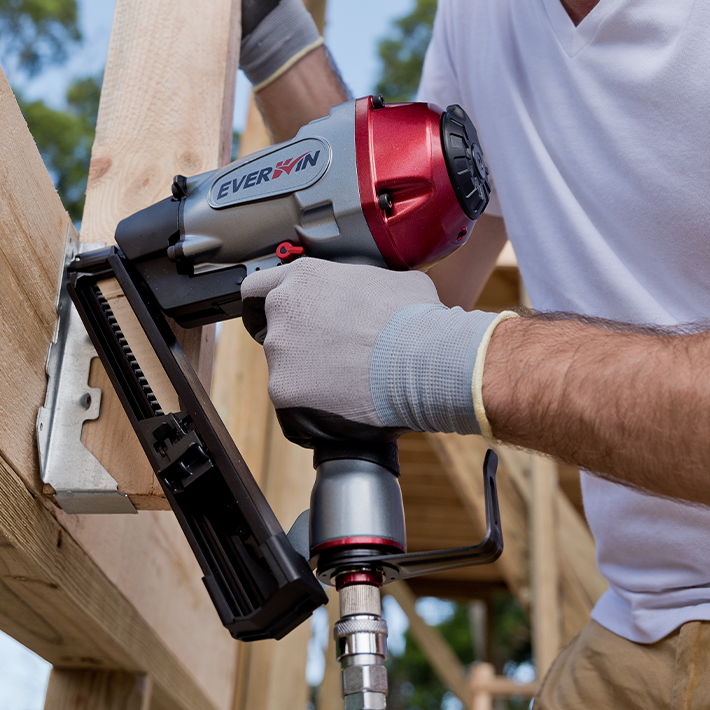
Positive Placement Nailers: Enhance Construction Precision
In the realm of house construction, the use of specialized tools can make a big difference in efficiency and precision. One such tool that stands out in this category is the positive placement nailer, affectionately known as the metal connector nailer. Let’s talk about how they differ from the regular nailers out there.
What are Positive Placement Nailers for?
Positive placement nailers are like the unsung heroes of the construction world, dedicated to a singular mission - securely fastening metal connectors. Whether it's the meticulous construction of a deck with joist hangers or the strategic fortification of a roof with hurricane ties, these nailers are the silent architects of structural resilience.

Also known as:
Beyond their official title, these nailers also go by aliases like metal connector nailers or the cool and casual joist hanger Nailers. It's like they have a secret society of names, all pointing to the same superhero ability – nailing metal connectors with finesse.
What is a positive placement nailer used for?
Picture this: a bustling construction site, a blend of residential and commercial dreams taking shape. Here, the positive placement nailer reigns supreme, lending its prowess to framing tasks. They are employed in various applications, and just to name a few would be: framing connections with joist hangers and rafter ties, roofing with hurricane ties, truss and beam connections with plates, staircase construction with hangers, and any general structural connections utilizing nail plates and tie downs. These connectors, guided by building codes, enhance structural integrity, prevent failures, and ensure compliance with safety standards, contributing to the overall stability and safety of the building.

How Does it Differ from a Regular Nailer?
The distinction between a metal connector nailer and a regular nailer lies in its design and functionality. Regular nailers are like the Swiss Army knives of the tool world – versatile and adaptable. Now, imagine a nailer specifically designed for precision to align nails perfectly with the designated pre-punched holes in metal connectors. That's the metal connector nailer like the EVERWIN PTIA Award-winning MCN65. This nailer has an innovative nosepiece design using the nail itself as the guide that provides accurate nail placement.
The safety mechanism also operates differently, featuring a safety contact arm that advances around the nails when the trigger is pulled. If the contact arm detects contact with the hardware, it initiates the firing of a nail. Notably on the Everwin MCN40B, MCN65,and MCN65LM, its other safety features stand out. Featuring an anti-backup pawl mechanism designed to halt nails from retracting into the nose channel. This additional safety measure significantly reduces the chances of nail jams and dangerous nail ricochets.
What to Watch Out for in Terms of Safety.
- PPE: Don your superhero gear - safety glasses and hearing protection.
- Read the Manual: Become a maestro by following the manufacturer's guidelines.
- Steadfast Workpiece: Ensure your workpiece is firmly anchored. No wobbling allowed.
- Nail Selection: Choose the right nails.
So, fellow builders, let these insights be your guiding stars. Here's to building a future where every nail, every connector, and every construction tale is a masterpiece!
